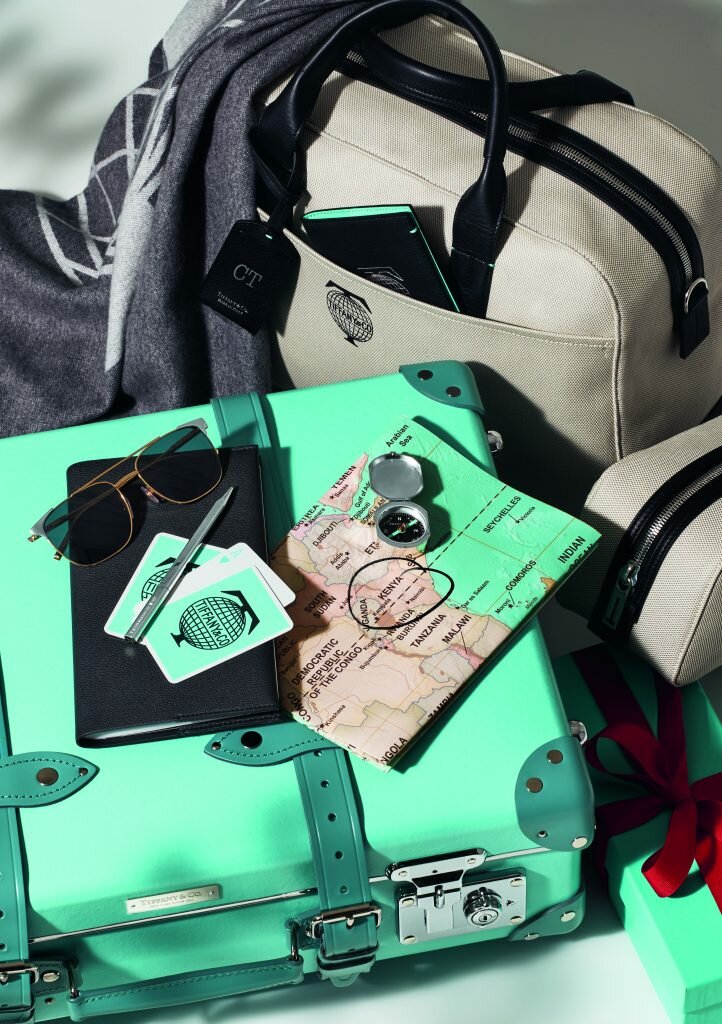For years now, you will have been able to eat at cafes and restaurants owned, branded, and curated by a luxury brand — think of Burberry‘s Thomas Cafe in London, the Gucci Osteria in Florence, or the various cafes run by Emporio Armani and Prada that are dotted all over the globe. For a more immersive experience, you can check into an Armani Hotel in Dubai, the Bvlgari Resort in Bali, or even the new Audemars Piguet hotel that will be opening in Le Brassus next year.
Experiences that offer a glimpse into a beautiful life curated by a luxury brand are, arguably, nothing new. We agreed — until we heard about the trip to the Arctic organised by Italian watchmaking brand Officine Panerai.
Announced at the Salon International de la Haute Horlogerie (SIHH) in January of this year, the trip will more specifically be to Svalbard, an archipelago north of mainland Norway, under the guidance of world-renowned explorer Mike Horn. According to Panerai, the trip among the ice floes will offer people “a chance to put themselves to the test and to confront nature and its challenges, but also to become personally aware of the dangers to our ecosystem caused by the impact of humans.” The expedition is scheduled for March 2020.

And yes, you can buy your way on board — sort of. In order to secure your ticket, you must purchase a limited edition Panerai watch — the Submersible Mike Horn Edition, to be exact. Measuring a girthy 47mm in diameter, the watch is made out of EcoTitanium (that is, recycled titanium), with a strap made using recycled PET bottles. Only 19 were ever made, so you know what the size of your Arctic expedition party will be.
-

Panerai Comsubin experience -

Panerai Comsubin experience -

Panerai VIPs got to swim with world-record-holding freediver Guillaume Néry in French Polynesia.
Even more surprisingly, this Arctic watch-plus-experience package is not the only one offered by Panerai. There were two more, all announced at SIHH, whose experiences have already passed; the collectors who purchased the Panerai Submersible Chrono Guillaume Néry Edition got to go underwater with the world-renowned freediver himself in Moorea, an idyllic island in French Polynesia, while those who purchased the Submersible Marina Militare Carbotech got to experience a training session with Comsubin, the diving and commando group of the Italian Navy.
Panerai isn’t the only one exploring branded experiences. As part of its holiday gifting series, jewellery company Tiffany & Co. has created a “Very Very Tiffany” trip of a lifetime for two to Kenya on safari. According to the brand, the holiday will include watching elephants in their natural habitat at the Samburu Reserve, spending time in the company of lions and rhinos at the Maasai Mara National Reserve, as well as experiencing wildlife conservation efforts at the Amboseli National Park. And of course, a Tiffany-branded trip would not be complete without special Tiffany travel accessories and luggage bag (made in collaboration with Globe-Trotter). And in characteristic fashion for the philanthropic American company, a portion of proceeds will go towards the Wildlife Conservation Network.

Like the curated cafes and hotels, these novelty experiences serve a very strategic purpose for the brands. Not only do they get to identify and engage with their most dedicated customers to build deep, long-lasting loyalty (increasingly rare among ), but the entire exercise also makes for an excellent branding opportunity. We now know that Panerai is a brand for the rugged explorer who would quite enjoy training with commandos or going on freezing-cold arctic expeditions, while the Tiffany buyer might prefer a slightly more curated experience — with an element of philanthropy involved, even.
Furthermore, these trips could be seen as testing the waters for an expansion into the luxury experience economy. Because most of these experiences are still attached to the purchase of a product, it is still not seen as the brands deviating too much from their existing portfolio — although that might soon change.
It has, after all, been widely reported that the millennial generation values experiences over material goods, with a study of American millennials indicating that 72 percent of them would rather spend on experiences, rather than purchasing desirable new objects. According to the same study, this is because experiences are more memorable, more likely to build essential communities and networks, and more integral to creating an individual’s identity. And this is why the once-nonexistent term of the “experience economy” has now reached mainstream vernacular.
Industry insiders are already acting on this intelligence, and taking steps to become more experience-driven. On a local level, brands are creating more opportunities for fans to interact more deeply with their luxury universes — the pop-up is king. Chanel, for example, has run several very successful beauty popups in Singapore over the past few years. Hermès’ three-day Carré Club in last year was an extravagant homage to its iconic silk scarves, and Cartier’s recent Clash de Cartier Studio was a brilliant exhibition of its experience-creating capabilities.

In terms of the big picture, there have also been indications that luxury groups are moving to capitalise on the experience economy. Luxury conglomerate LVMH, for example, acquired hospitality group Belmond last year for US$3.2 billion. On top of a portfolio of hotels across several continents, Belmond also owned and operated the Venice-Simplon Orient Express and Royal Scotsman train services. Given that namesake brand Louis Vuitton brands itself around the “spirit of travel”, we can see how internal group synergies might converge quite nicely to create new consumer-oriented experiences.
Who knows — perhaps we’ll see a Louis Vuitton Orient Express journey occur one day, complete with Damier canvas travel trunks.